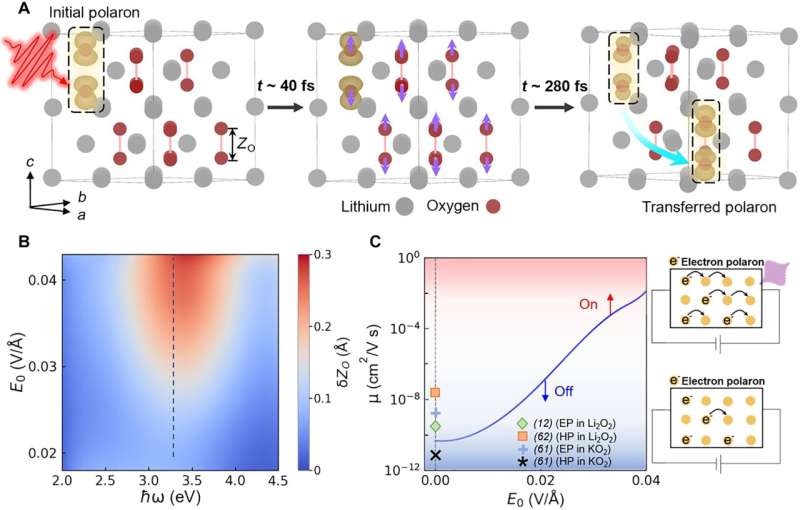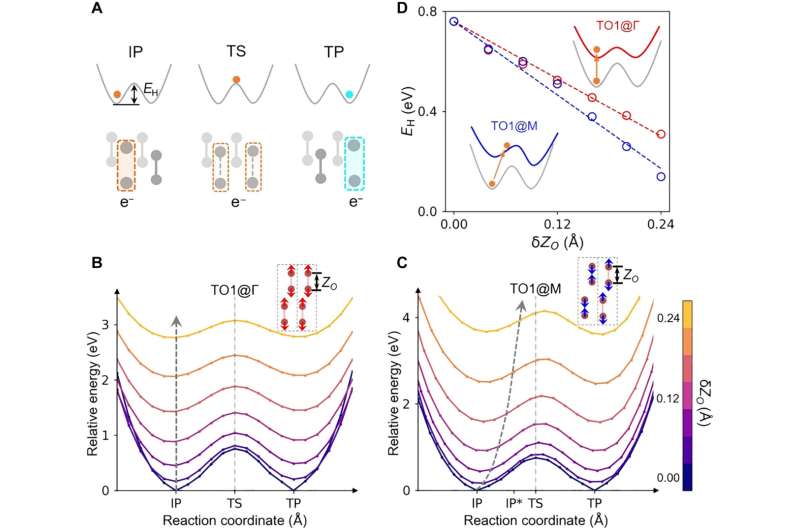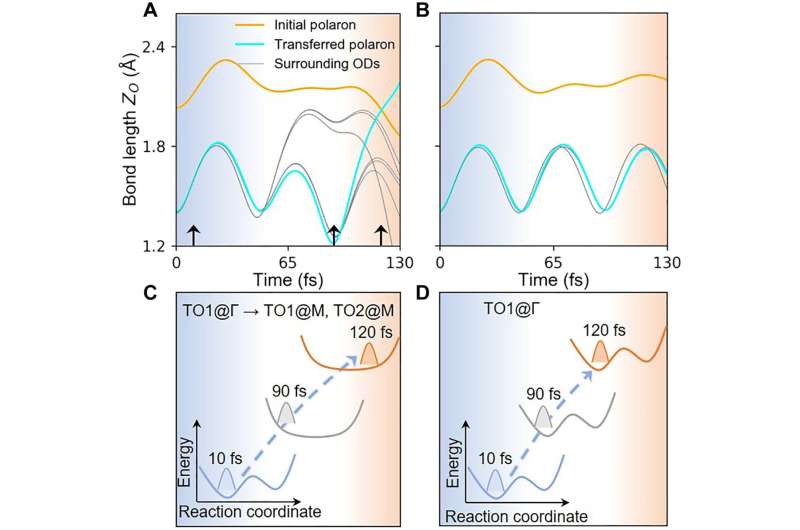This article has been reviewed according to Science X's editorial process and policies. Editors have highlighted the following attributes while ensuring the content's credibility:
fact-checked
peer-reviewed publication
trusted source
proofread
Manipulating polaron transport via laser-induced coherent phonons

Polarons are quasiparticles composed of excess electrons dressed with virtual phonon clouds. They are ubiquitous in materials and play a key role in various physicochemical properties, including superconductivity, photocatalysis and ferroelectricity. However, carrier mobility is reduced when polarons are formed due to strong carrier localization, which degrades the performance of electrical devices, and an effective strategy to solve this problem is still lacking.
Ultrafast photoexcitation is an efficient method to manipulate the dynamics of (quasi) particles under non-equilibrium conditions. However, most of the previous ultrafast experiments were limited to characterizing the polaron formation process, and only speculations about the polaron transport mechanism were presented. Theoretical studies based on the adiabatic approximation can only reveal the static and thermal-dynamic properties of polarons.

Wang Huimin and Liu Xinbao and colleagues in Prof. Meng Sheng's group from the Institute of Physics of the Chinese Academy of Sciences have discovered that laser-driven coherent phonons enable an order-of-magnitude increase in polaron mobility. The study, titled "Giant acceleration of polaron transport by ultrafast laser-induced coherent phonons," was published in Science Advances.
They found that the selective excitation of specific vibrational modes effectively reduces the energy barrier of polaron hopping.
Due to the strong non-adiabatic couplings between electronic and ionic subsystems, phonon–phonon scattering in q space occurs rapidly within sub-picoseconds, triggering the migration of polaronic deformations. The carrier mobility in the prototypical polaronic material Li2O2 can be increased by eight orders of magnitude by tuning the laser parameters, much more efficiently than thermal effects.

These results extend the understanding of polaron dynamics to the non-equilibrium regime. For the first time, the non-thermal route to ultrafast control of polarons is proposed, which would innovate the design principles of optoelectronic devices with high on-off ratio and ultrafast responsibility.
More information: Hui-Min Wang et al, Giant acceleration of polaron transport by ultrafast laser-induced coherent phonons, Science Advances (2023). DOI: 10.1126/sciadv.adg3833
Journal information: Science Advances
Provided by Chinese Academy of Sciences





















